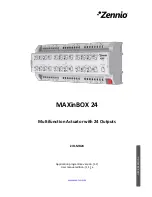
CHAPTER 3 CPU ARCHITECTURE
61
User’s Manual U11302EJ4V0UM
(d) Auxiliary carry flag (AC)
If the operation result has a carry from bit 3 or a borrow at bit 3, this flag is set (1). It is reset (0) in all
other cases.
(e) In-service priority flag (ISP)
This flag manages the priority of acknowledgeable maskable vectored interrupts. When ISP = 0,
acknowledgment of a vectored interrupt request specified as lower priority by the priority specification flag
registers (PR0L and PR0H) (refer to
16.3 (3) Priority specification flag registers (PR0L, PR0H)
) is
disabled. Whether the interrupt request is actually acknowledged or not is controlled by the interrupt enable
flag (IE).
(f)
Carry flag (CY)
This flag stores overflow and underflow upon add/subtract instruction execution. It stores the shift-out value
upon rotate instruction execution and functions as a bit accumulator during bit manipulation instruction
execution.
(3) Stack pointer (SP)
This is a 16-bit register used to hold the start address of the memory stack area. Only the internal high-speed
RAM area (FB00H to FEFFH) can be set as the stack area.
Figure 3-13. Stack Pointer Format
The SP is decremented ahead of write (save) to the stack memory and is incremented after read (reset) from
the stack memory.
Each stack operation saves/resets data as shown in Figures 3-14 and 3-15.
Caution Because RESET input makes SP contents undefined, be sure to initialize the SP before
instruction execution.
SP
15
0
SP15
SP13 SP12 SP11 SP10
SP9
SP8
SP7
SP6
SP5
SP4
SP3
SP2
SP1
SP0
SP14
















































